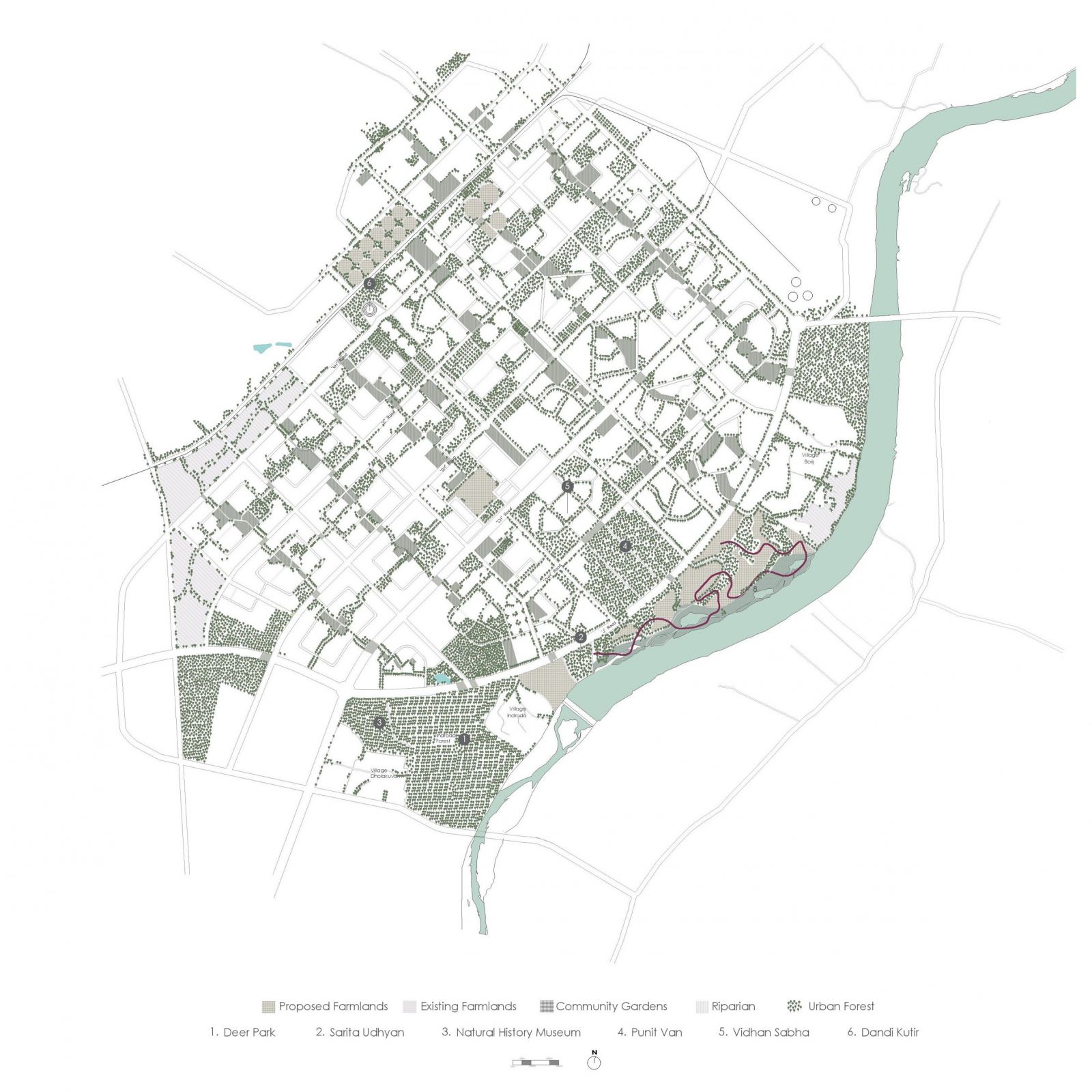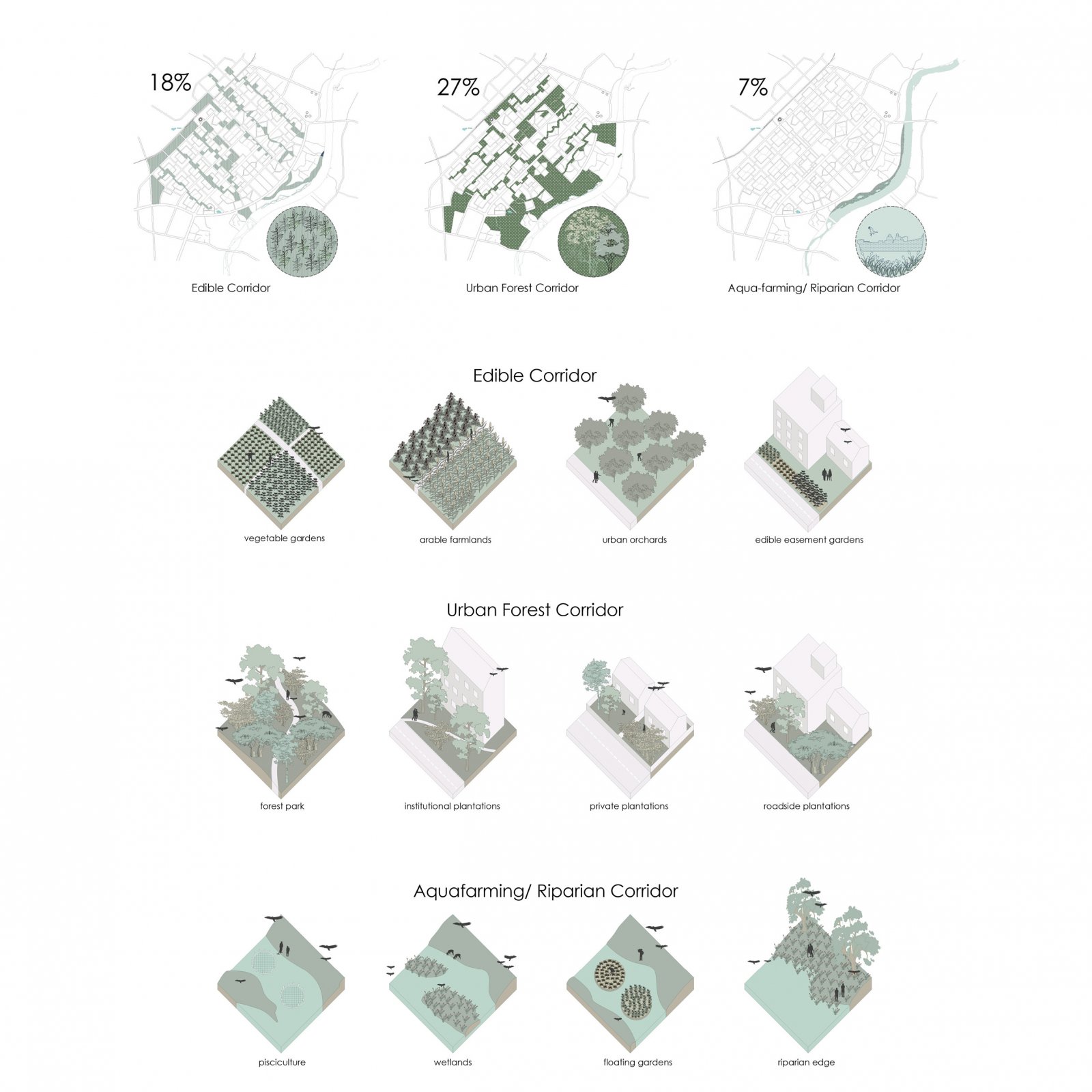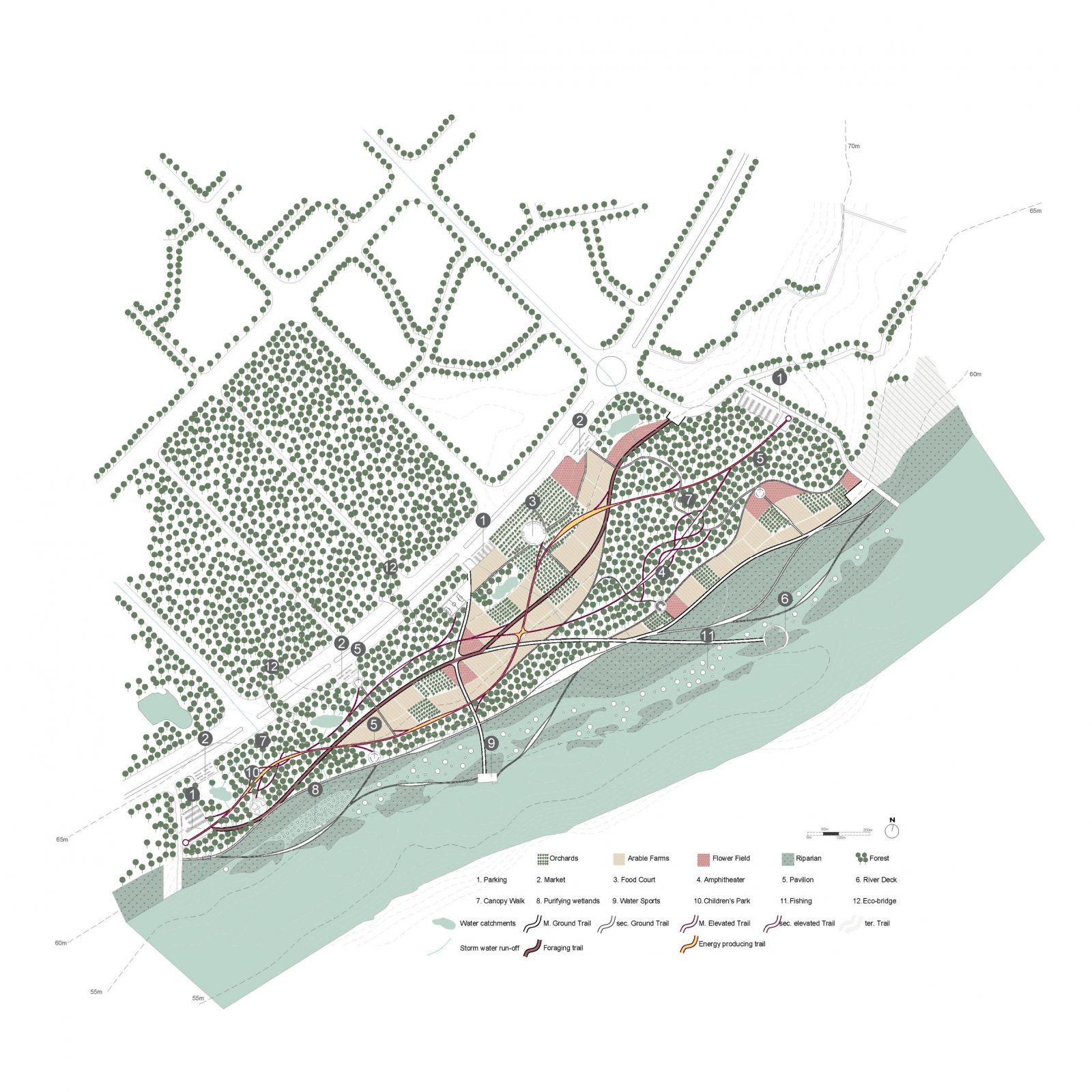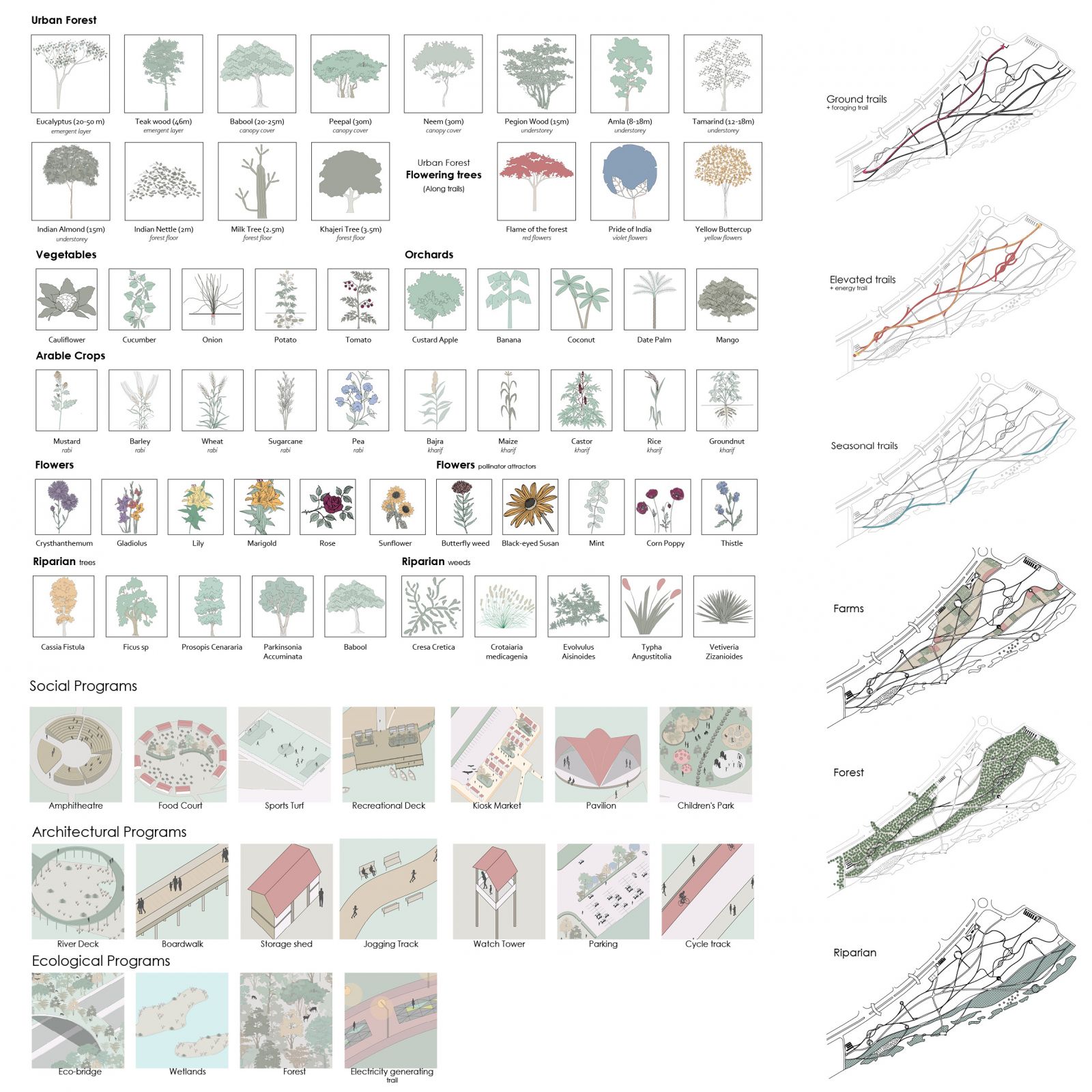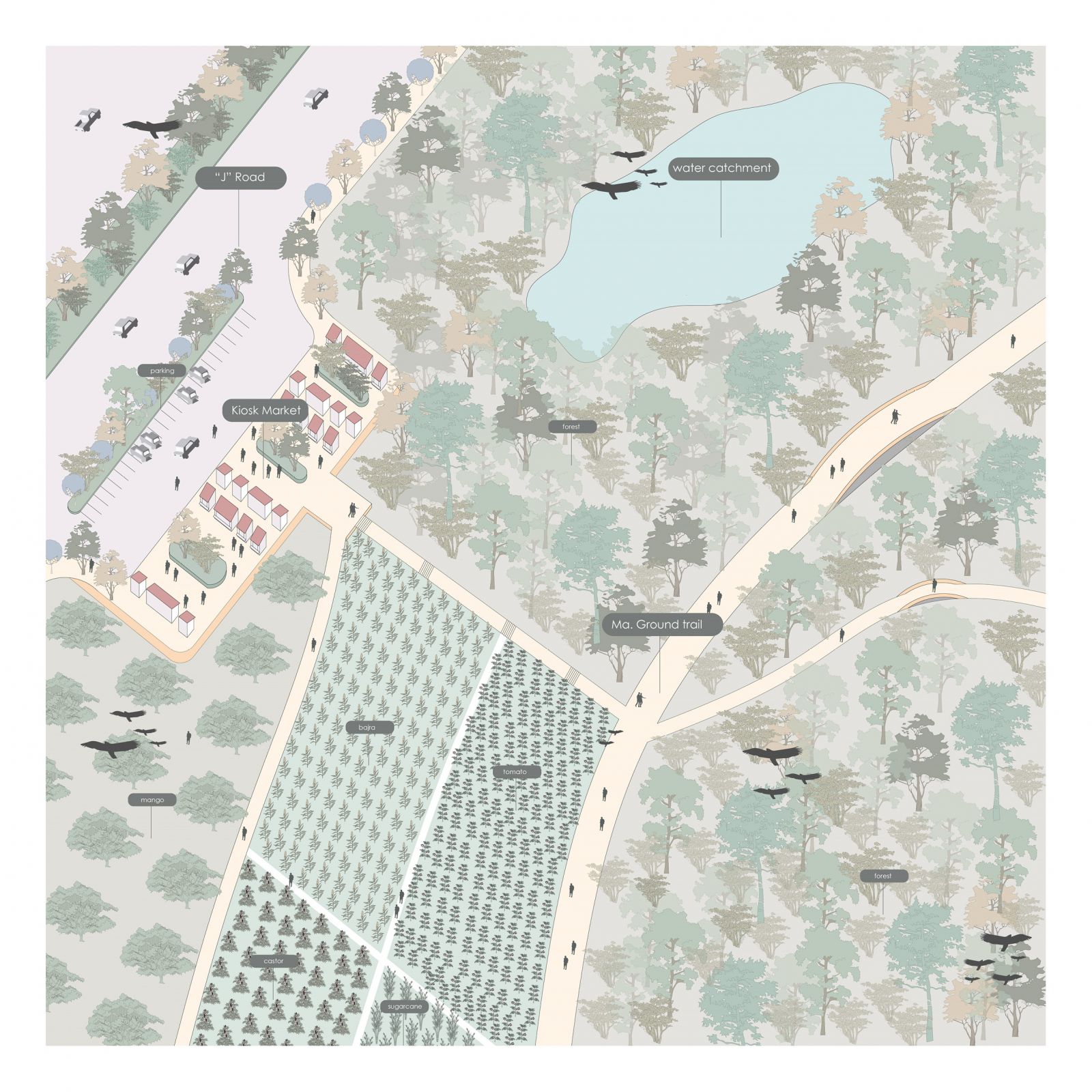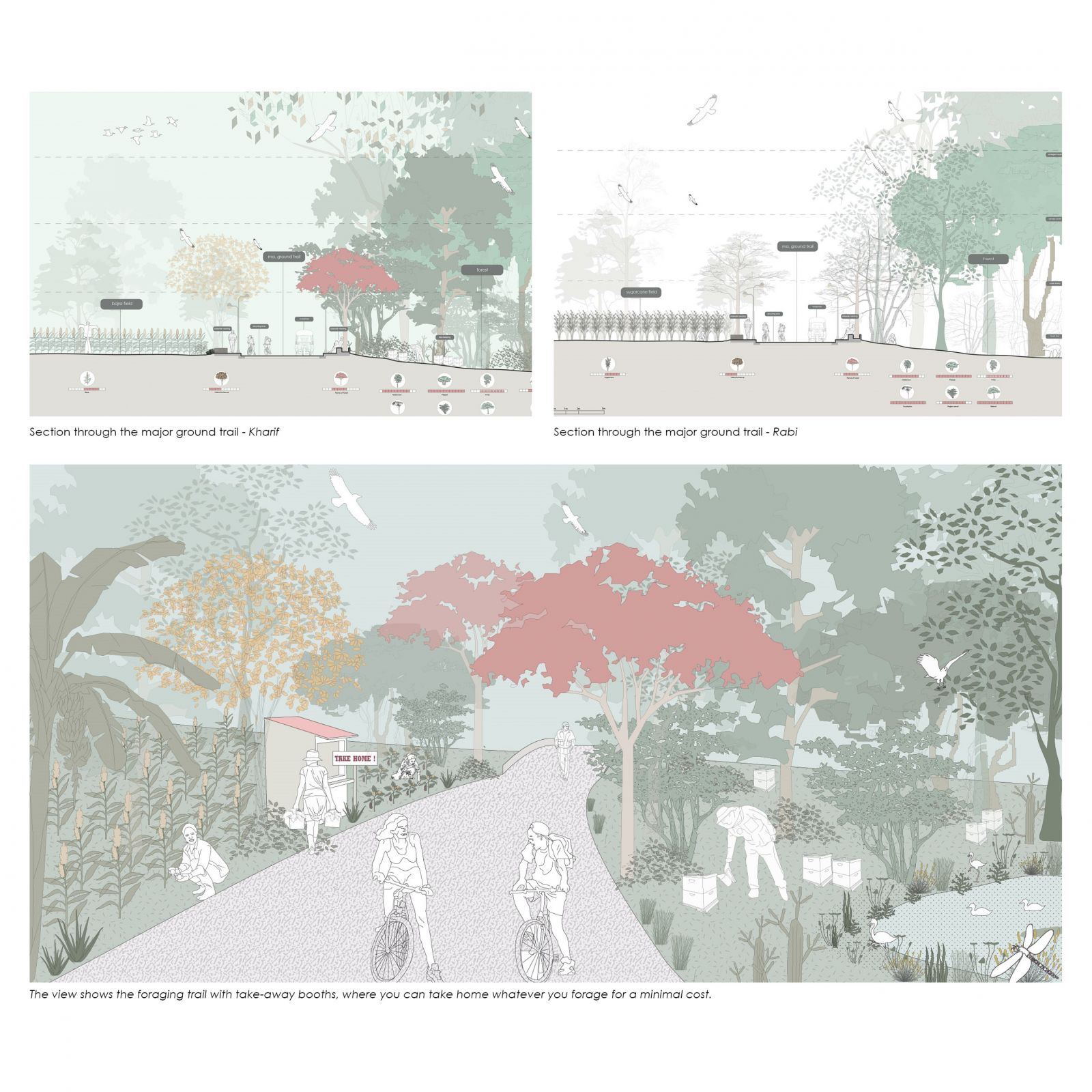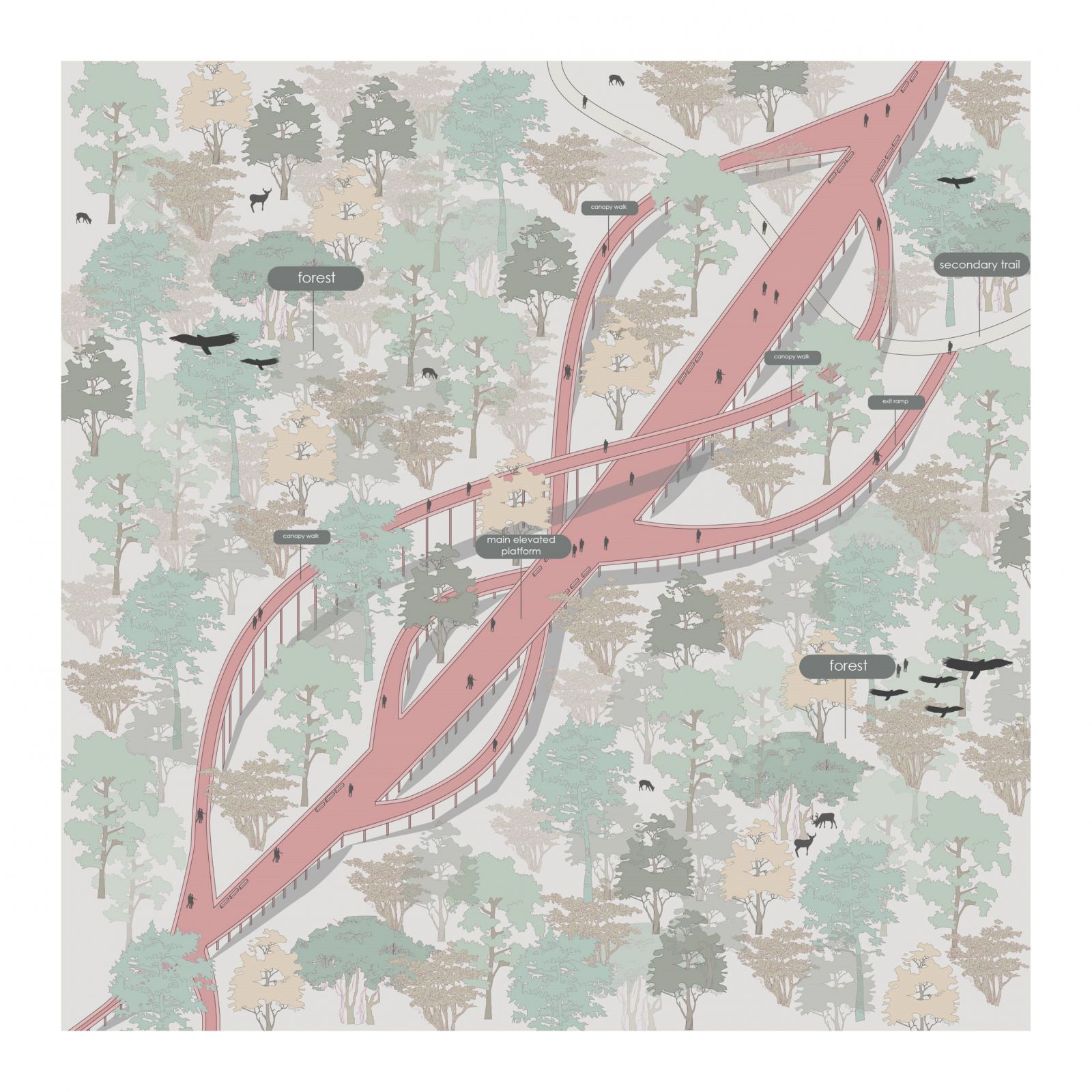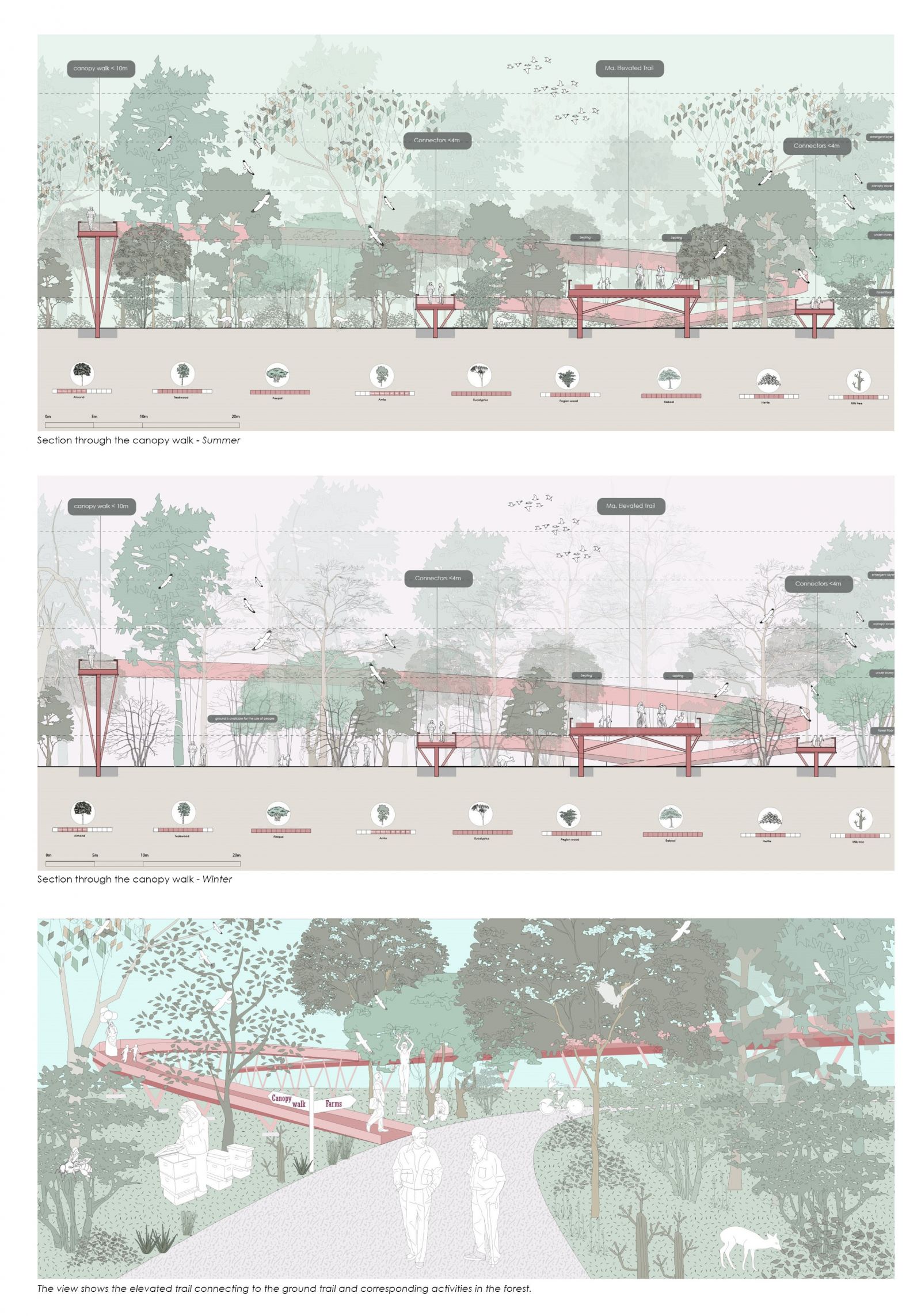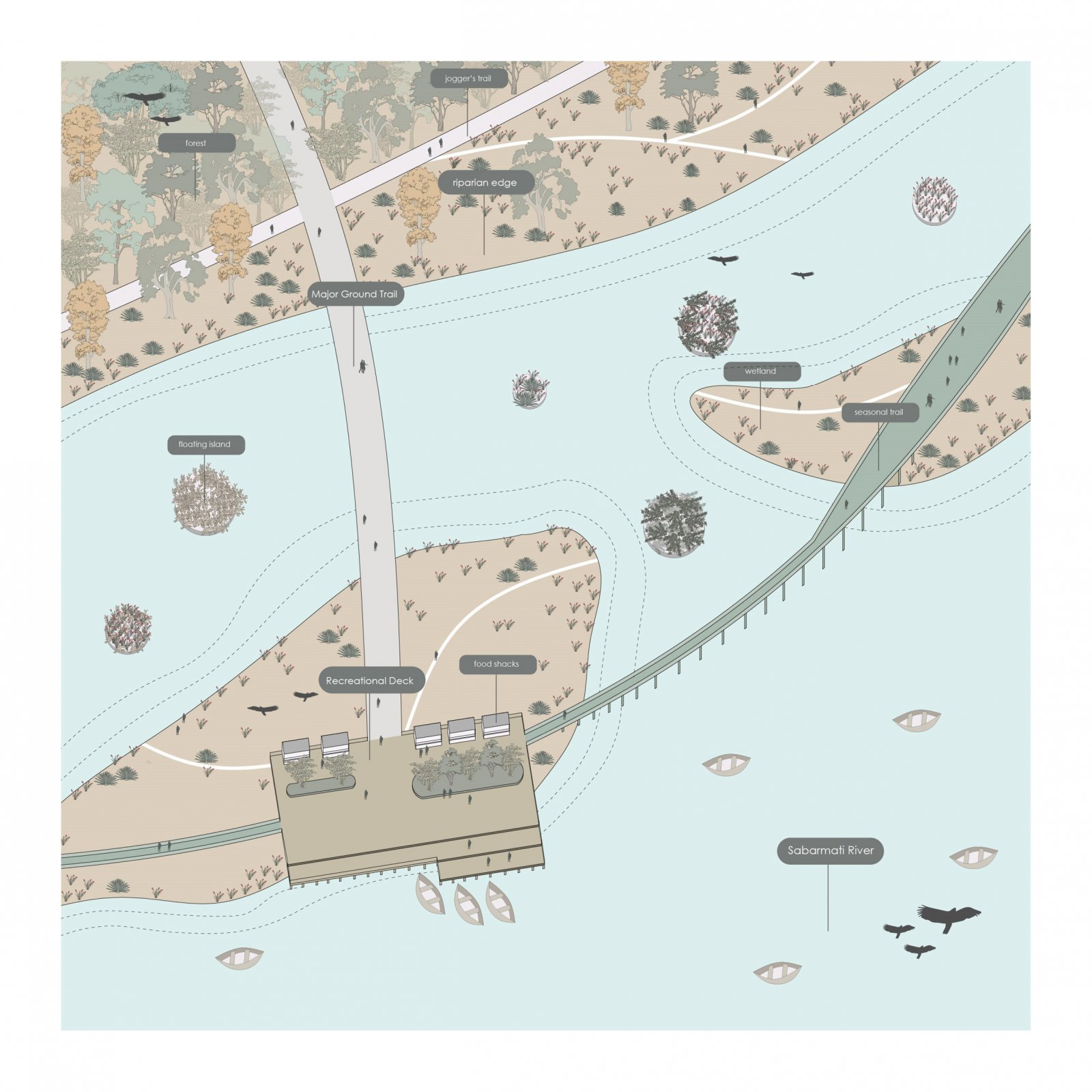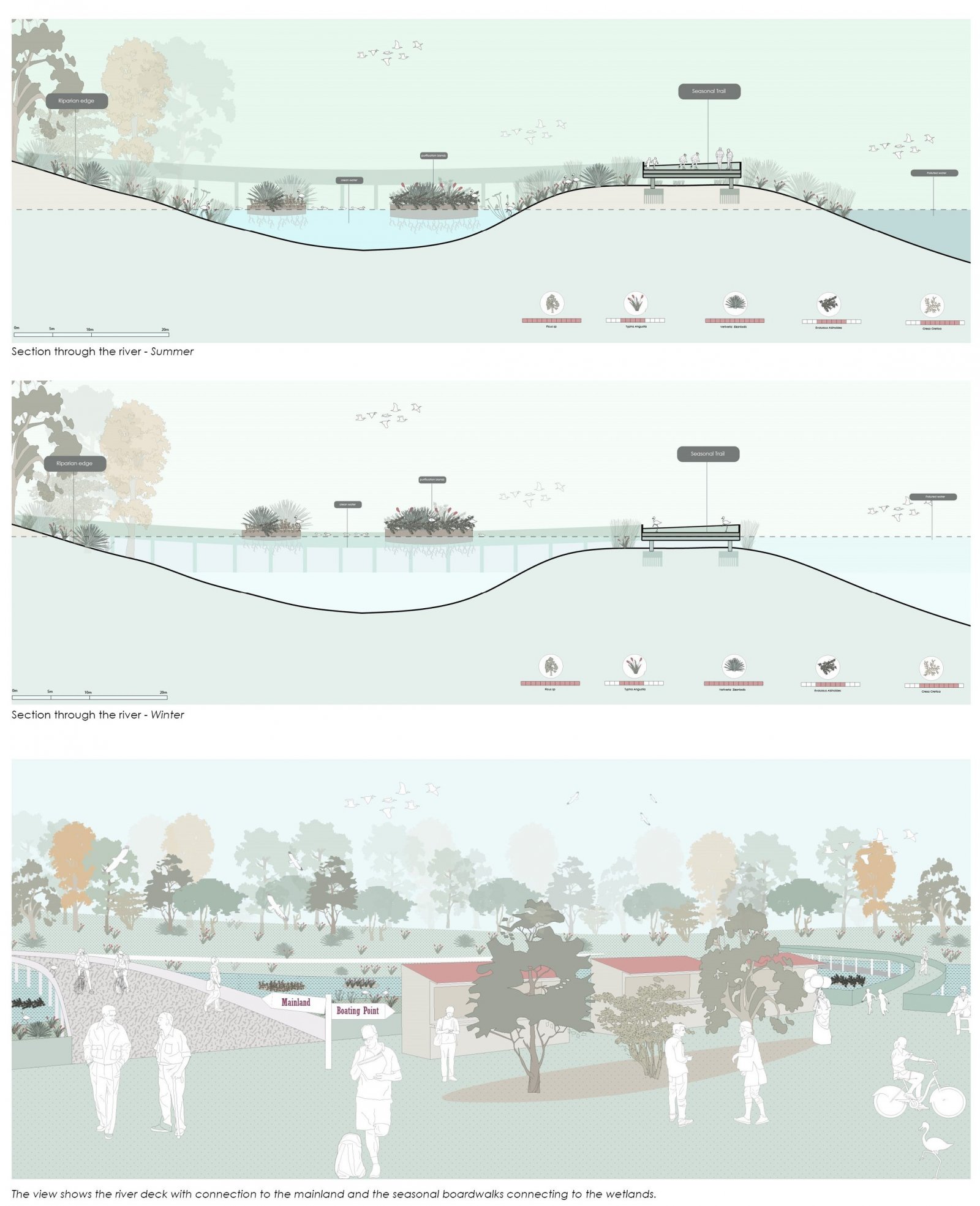Your browser is out-of-date!
For a richer surfing experience on our website, please update your browser. Update my browser now!
For a richer surfing experience on our website, please update your browser. Update my browser now!
The project begins with the identification of open spaces within the city of Gandhinagar that can be put to various productive uses like urban farms, vegetable gardens, urban orchard, urban forests, etc. The aim is to introduce connections between these productive patches through a network of green corridors. This will help to connect the fragmented patches of diversity for increased interaction and unobstructed movement of urban fauna. The project essentially looks at 3 types of productive landscapes namely edible, urban forest, and aqua-farming. The edible corridor will support plant-based farming activities, the urban forest will support ecological functions such as influence micro-climate, improve air quality, regulate hydrologic cycles and provide habitat for wildlife whereas the aqua-farming corridor will support the rearing of fish along with water-based plant production. The aim is to connect the three types of corridors as a part of a continuous productive landscape in the city of Gandhinagar. Three of these productive landscapes meet at the riverside, which is envisioned as a park that supports different kinds of recreational activities coupled with productivity. The riverside is given the program of public space by the introduction of a network of trails that run along with the different landscapes within the site providing a series of experiences for the visitors while walking through these landscapes. This public corridor consists of different pause points and offers a range of activities that transform with seasons.
View Additional Work